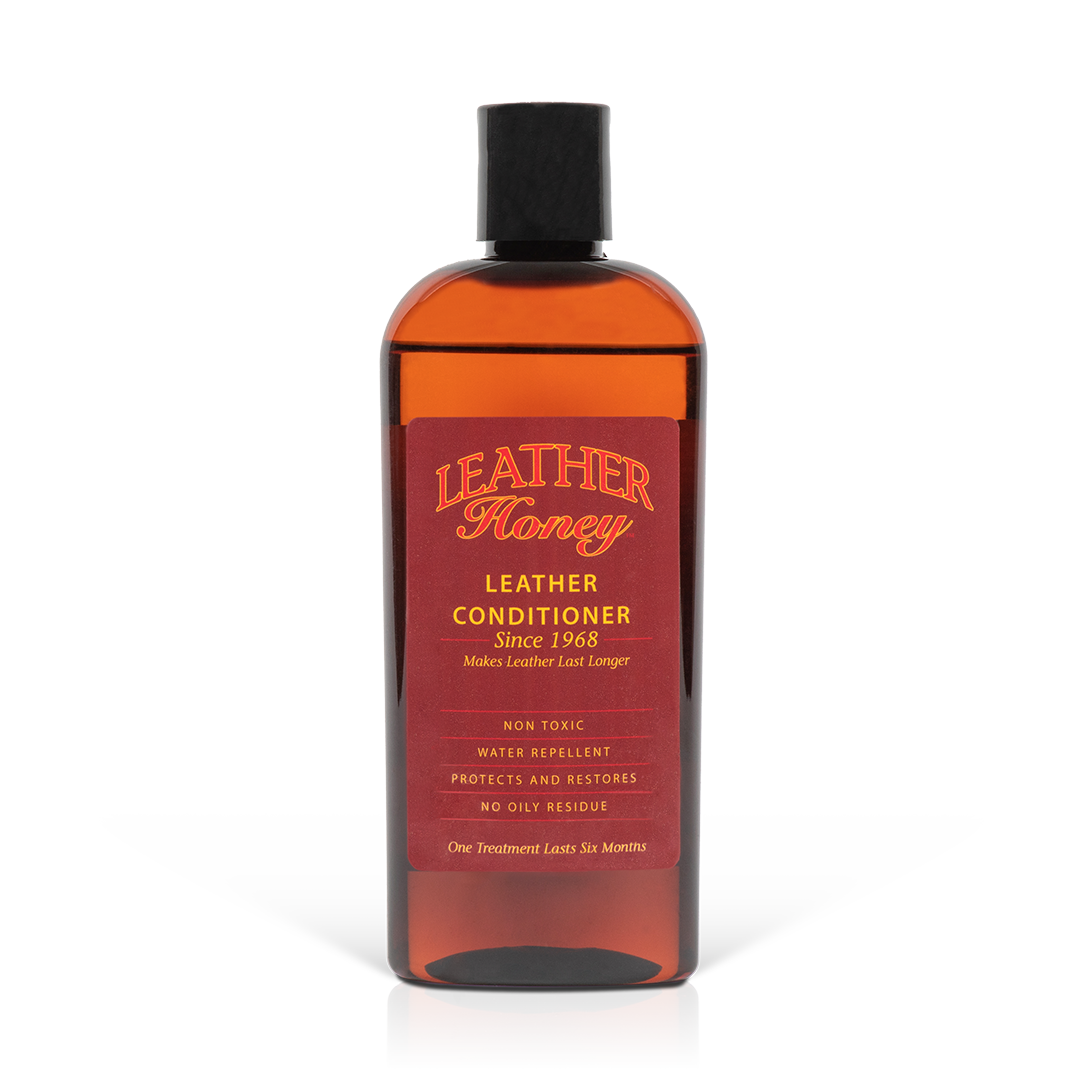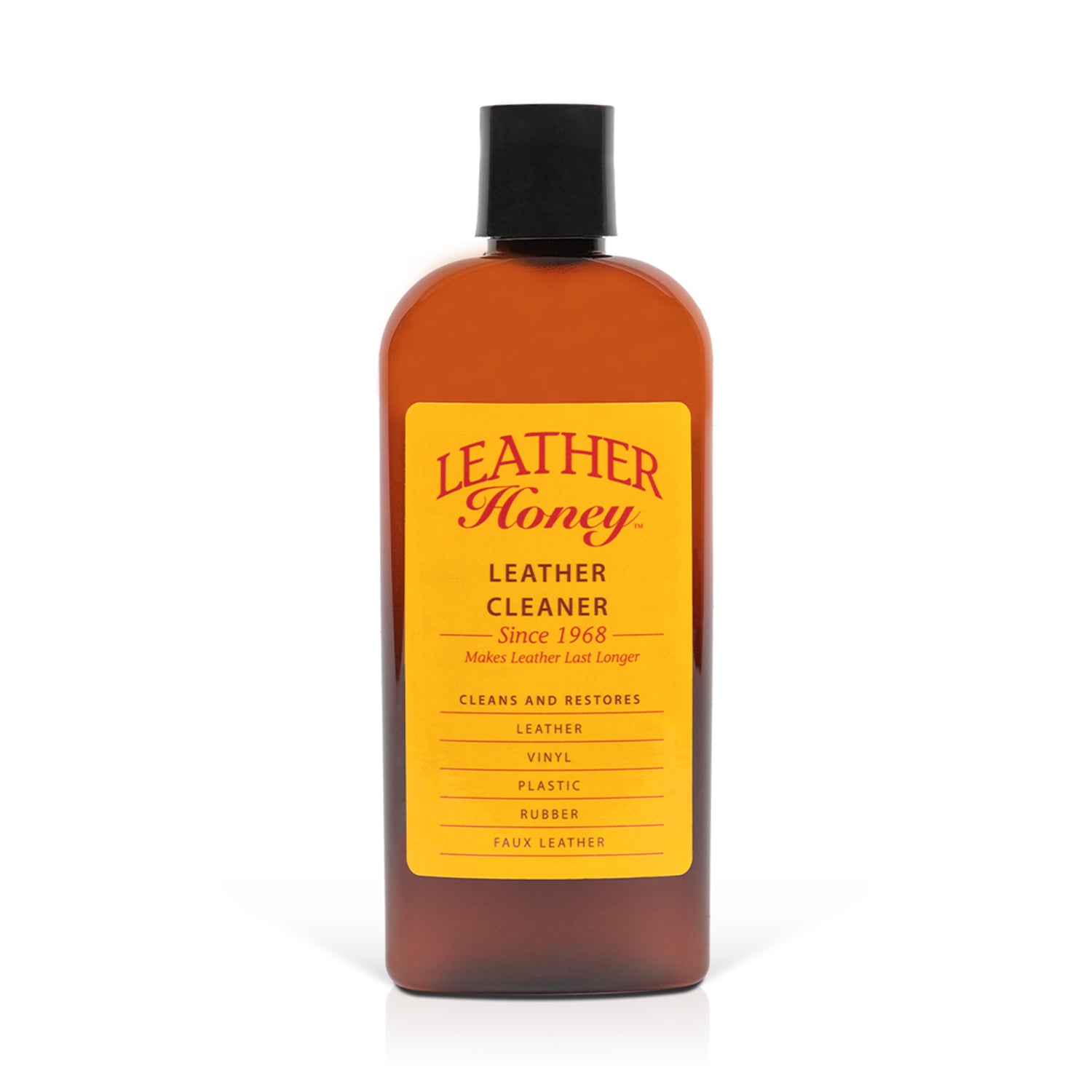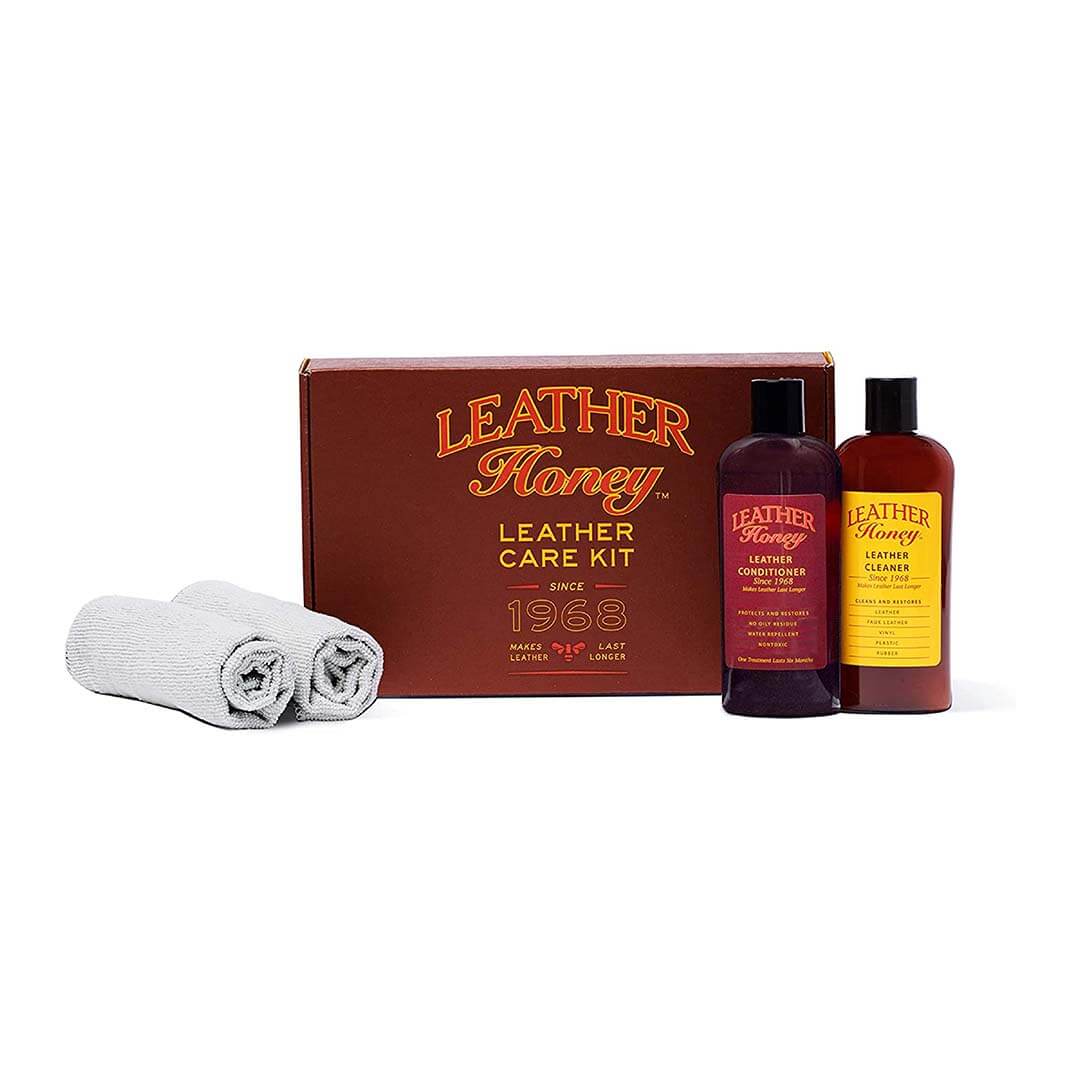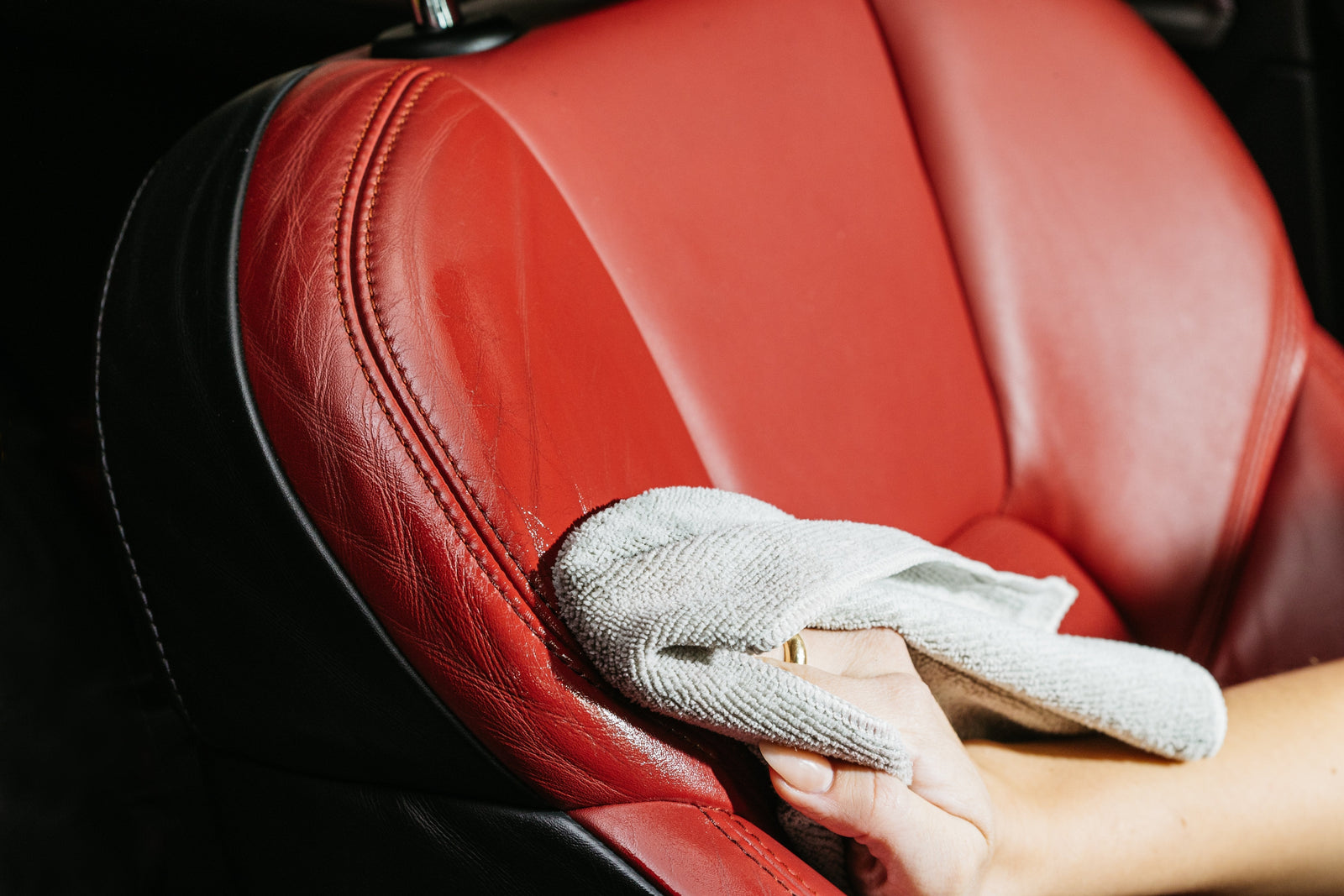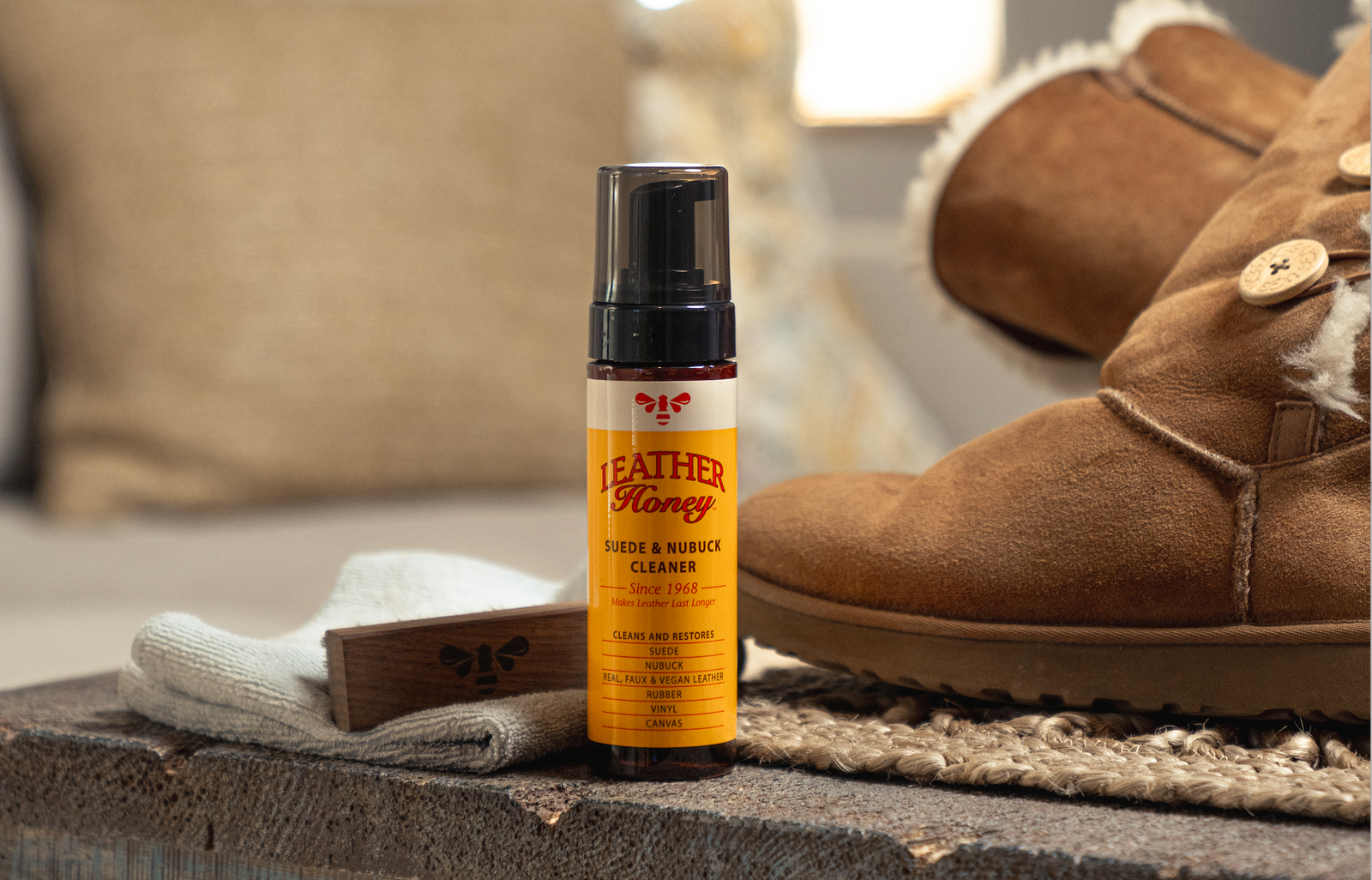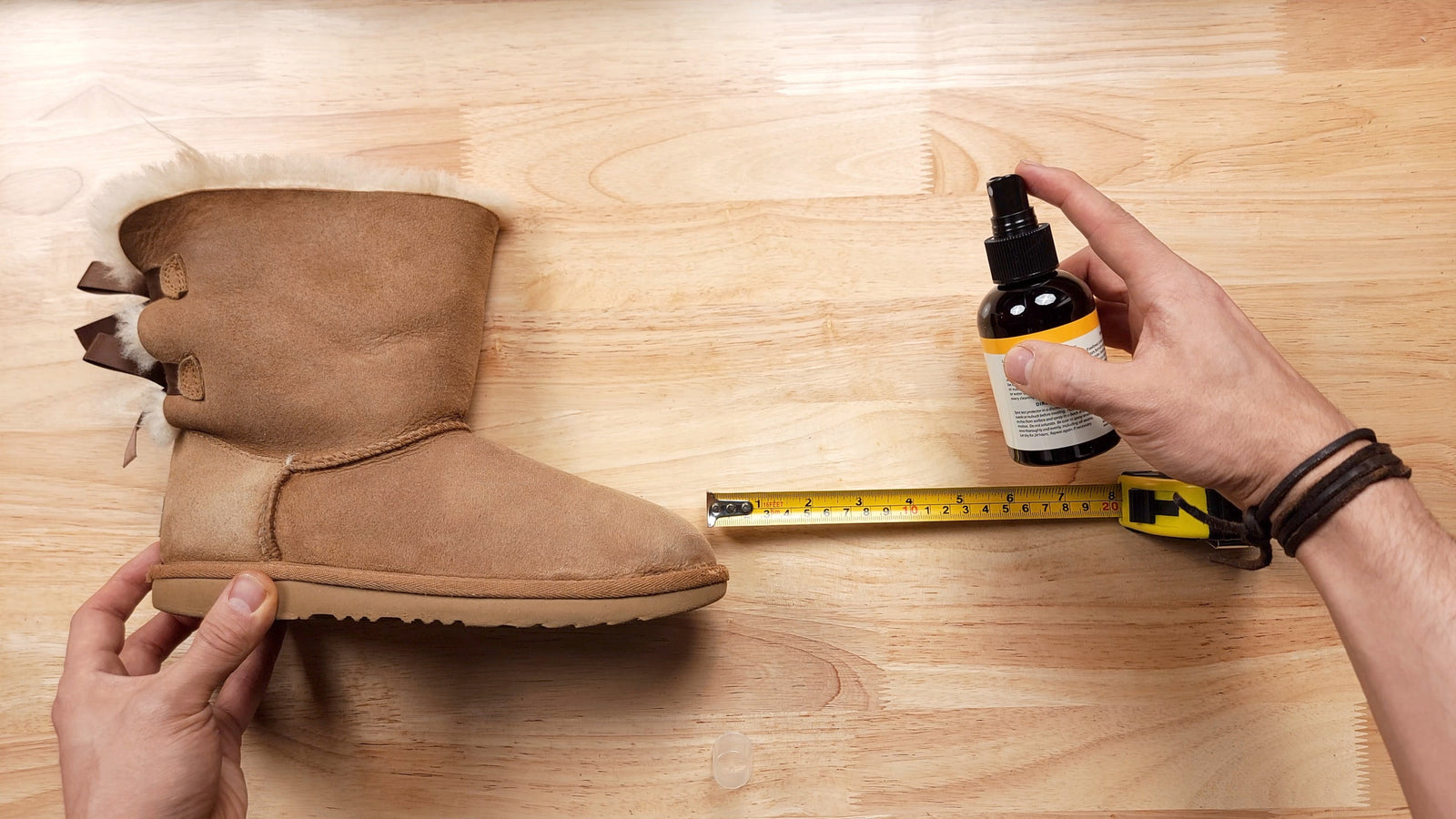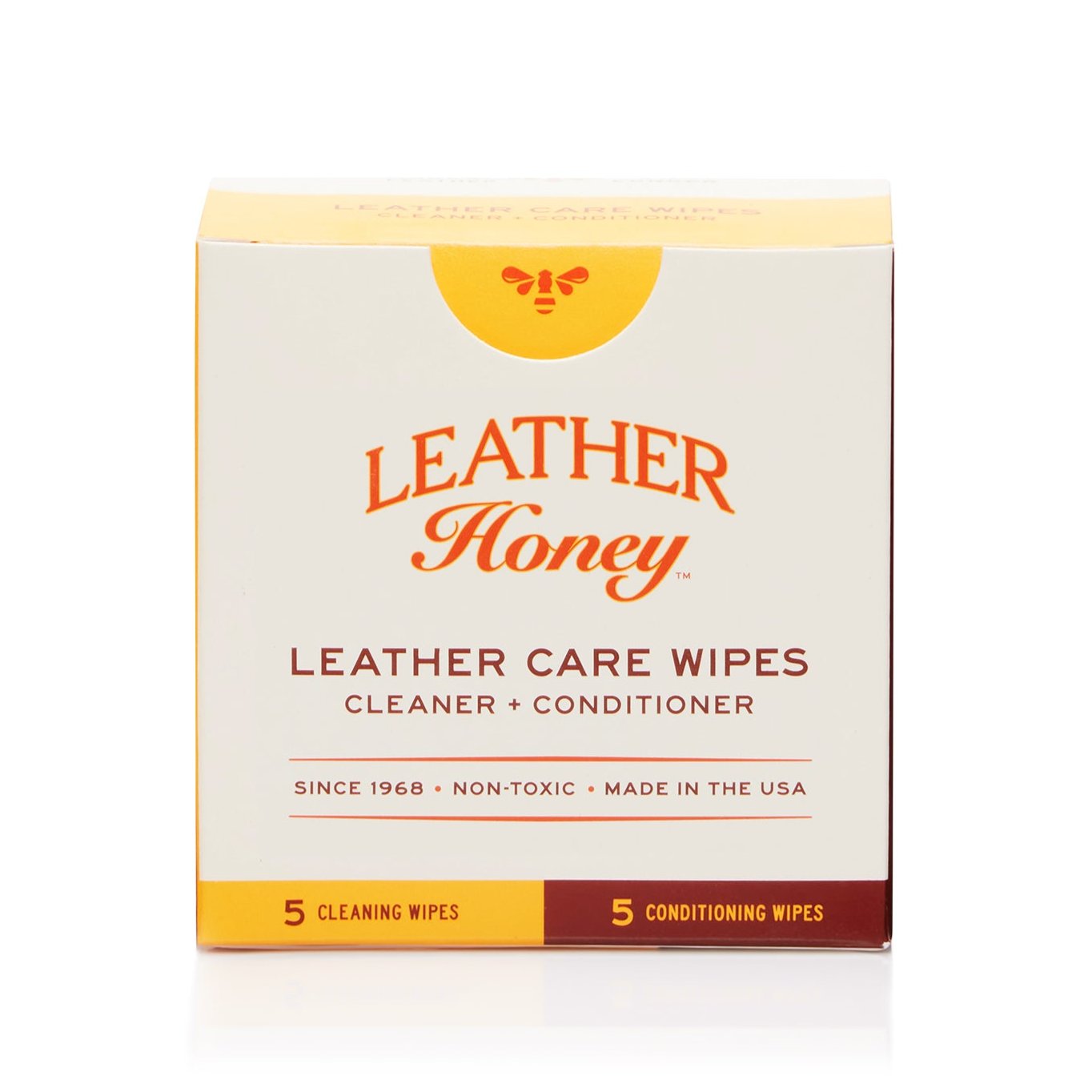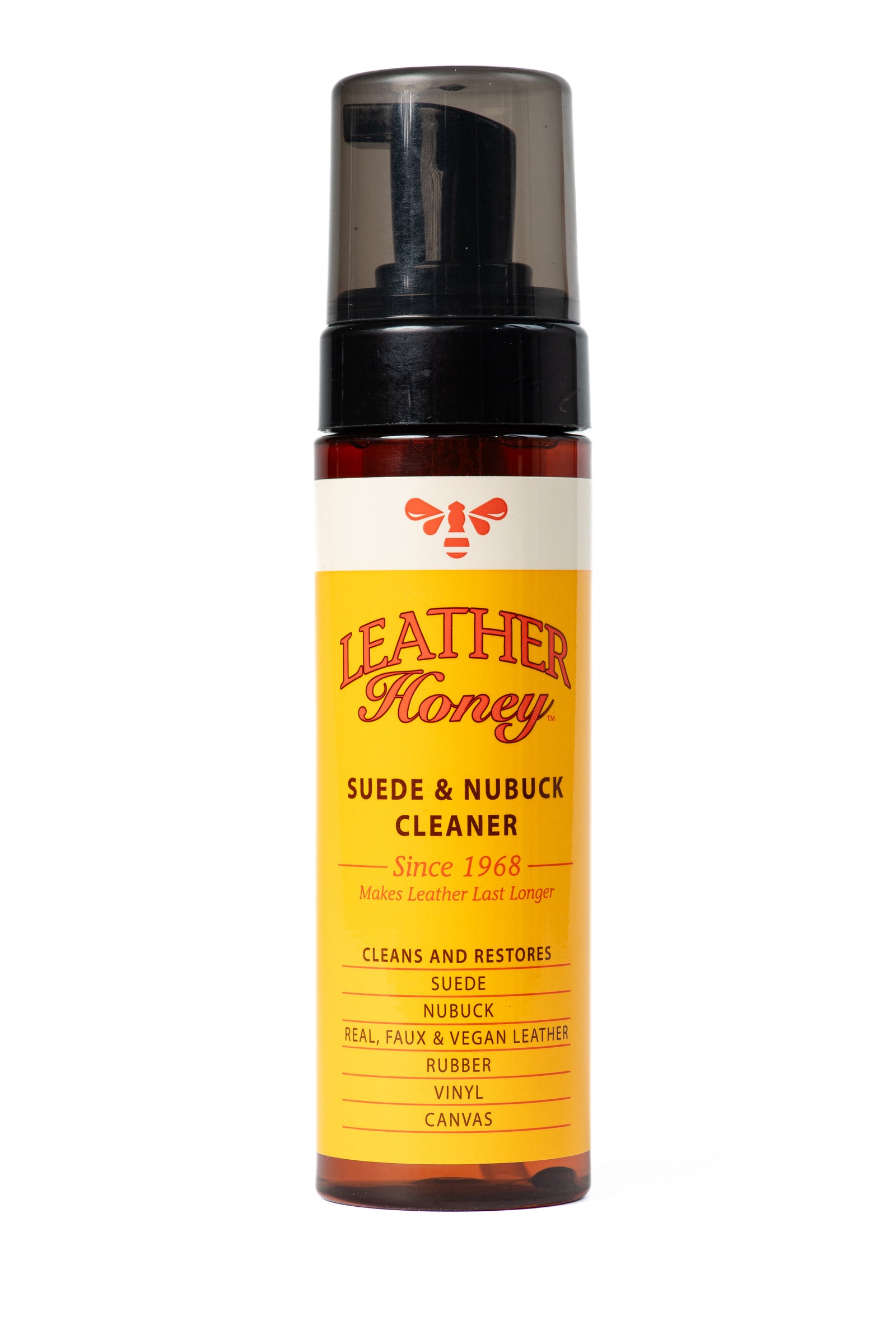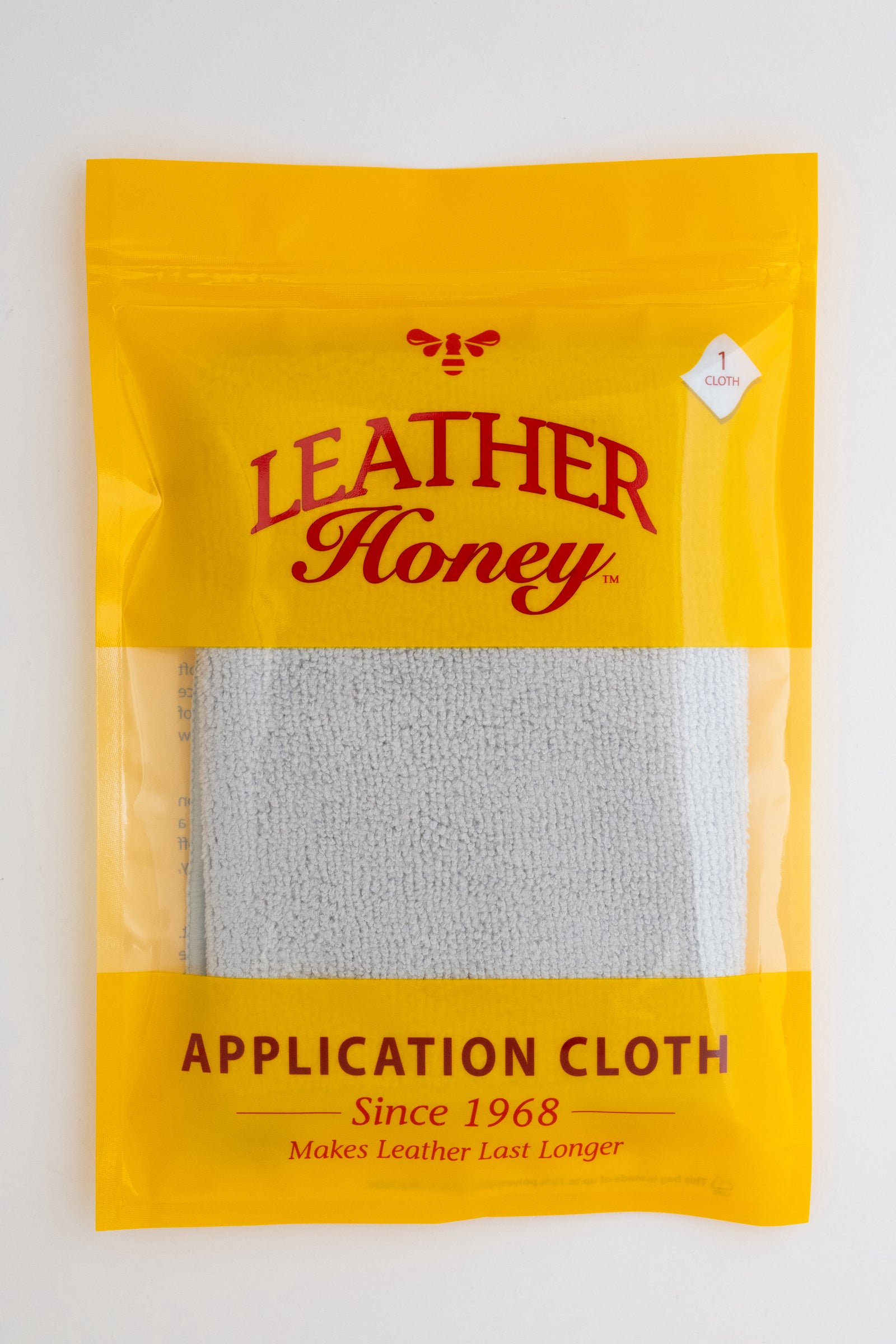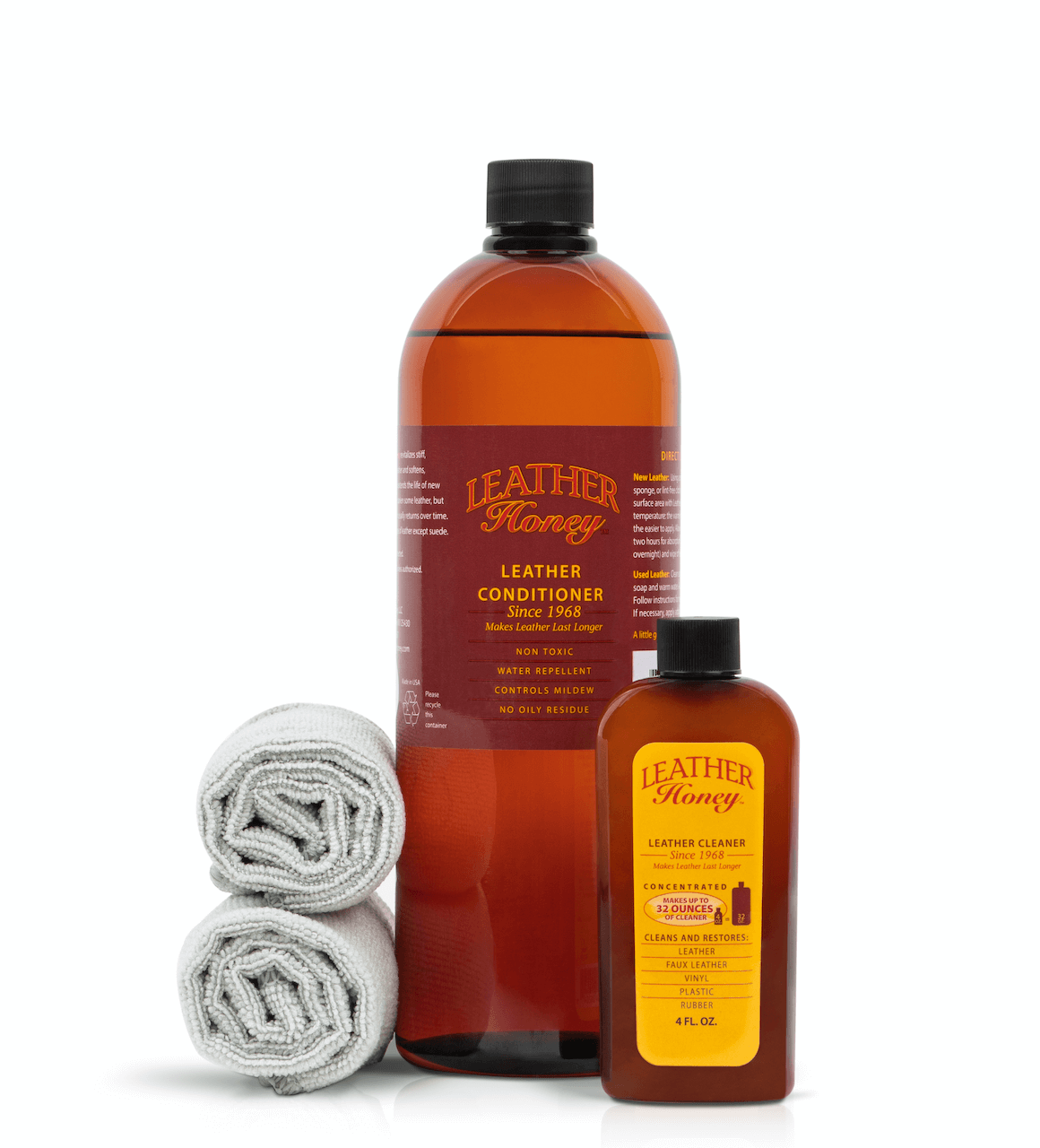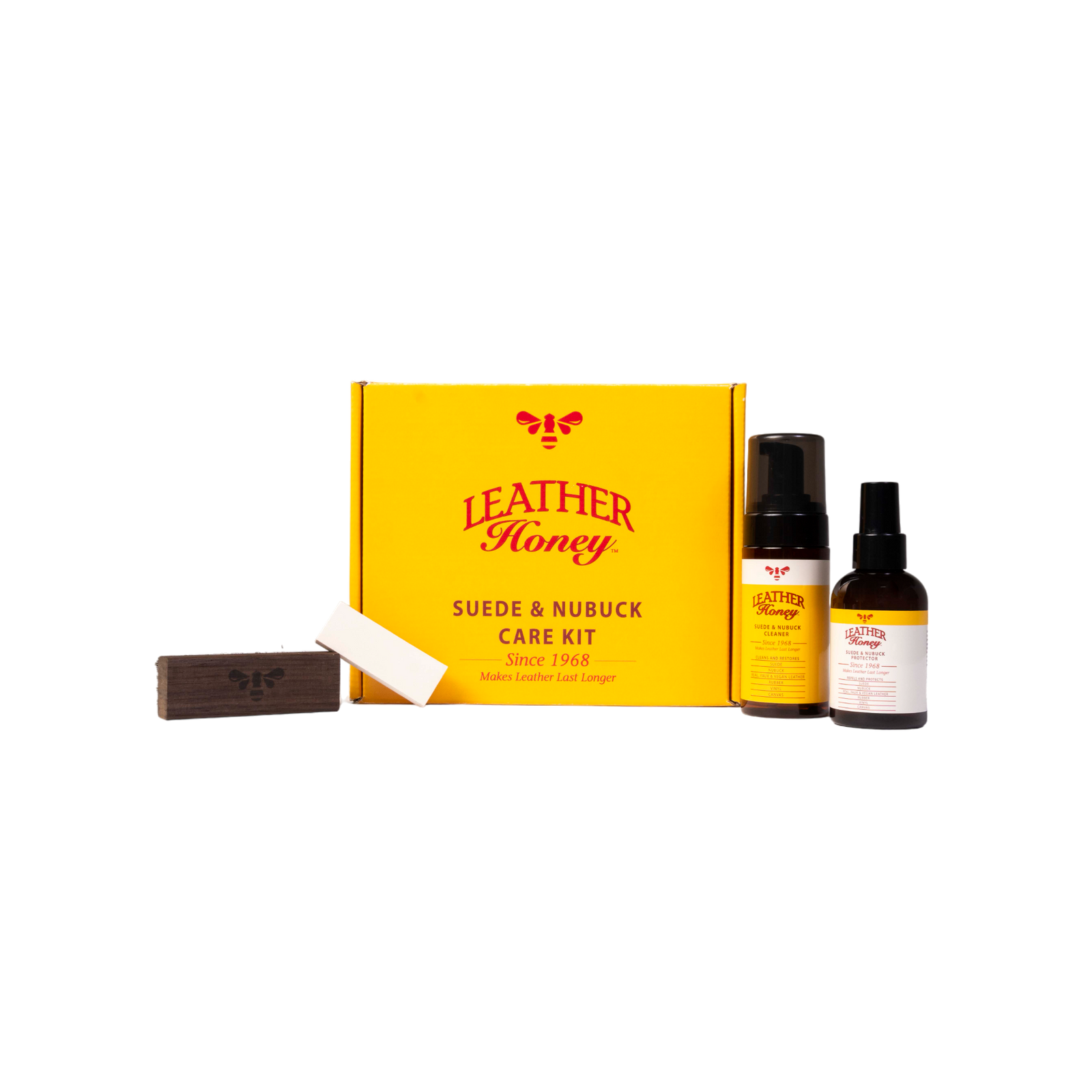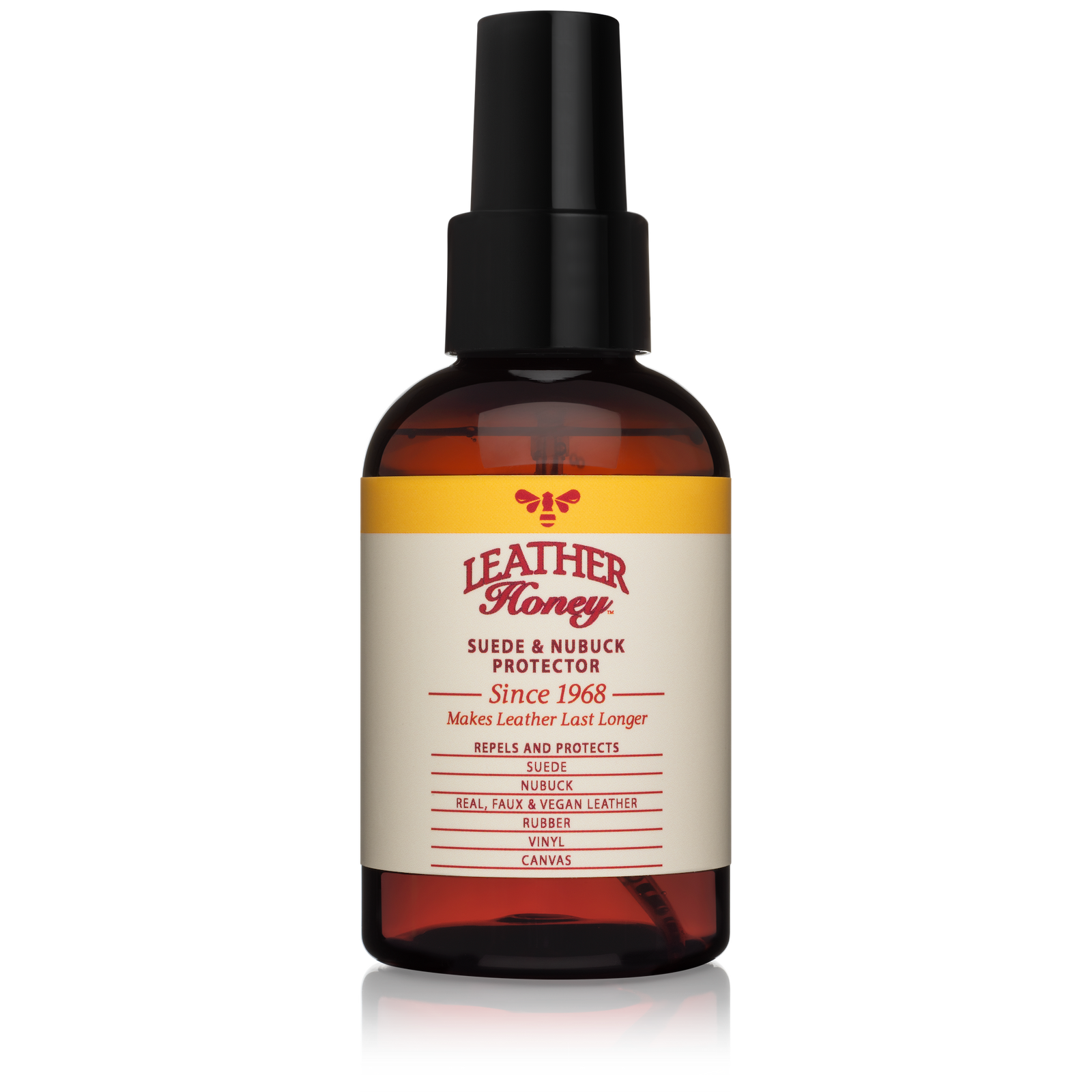Cleaning leather is a vital part of keeping your leather items looking new. But the process of cleaning and conditioning leather — and the products you use to do so — is quite specific. That’s because leather is a natural material, and it can be delicate. Typical cleaning methods don’t always work on leather, and some of the most common household cleaning products or DIY leather cleaners can damage the leather.
If you need to clean some leather, check out our guide below. These steps will teach you how to clean almost every type of leather and leather item. But before we get to how to clean leather, let’s start with what not to do.
WHAT TO AVOID WHEN CLEANING LEATHER
We've heard this question — "What is the best thing to clean leather with?" — a million times. Maybe more. The answer is quite simple — a premade leather cleaner like Leather Honey Leather Cleaner. However, when it comes to cleaning leather, it can be helpful to know what not to use. Here's a list of items you should avoid:
- Baking soda
- Vinegar
- Fingernail polish remover
- Windex
- Disinfectant wipes
- Bleach
All of those products will do more harm than good by fading the leather, stripping it of important moisture or dyes and damaging the leather’s stitching. When cleaning leather, you want a cleaner specifically designed for leather. Everything else is a non-starter if you want your leather products to last and look amazing.
Along the same lines, never put leather in a washing machine or dryer — water can severely damage the leather and the high heat of the dryer will make that damage significantly worse. Your leather will end up dry, brittle and cracked.
HOW TO CLEAN LEATHER IN 6 EASY STEPS
1. Understand what type of leather you have
As we noted earlier, leather is a natural material and varies widely, so before you start cleaning leather, it’s important to know what type of leather you have. One way to do that is to check the manufacturer's instructions. For example, if your leather is prone to water stains — many soft leathers, like suede are — you want to be sure to cover the entire surface with your leather cleaner as opposed to simply spot treating. If you have suede, make sure you use our Suede & Nubuck Care Kit, it includes everything you need to clean that type of leather.
2. Spot test the leather cleaner
Before you start the leather cleaning process, remember to spot test any product you plan to use in a hidden, discreet area. This is true even if you’re cleaning with a product that is suitable for all types and colors of leather, like our own Leather Honey Leather Cleaner. Spot testing involves finding a hidden section of the item, applying a bit of the leather cleaner and then allowing it to dry so you can fully preview the effects. The leather might darken a bit, but this will fade over time. Need help finding a good spot for the leather cleaner test? Try the underside or back of a couch cushion, the inside of a jacket collar, or the inside seam of a purse.
3. Clean stains on your leather quickly
When it comes to cleaning leather, your best defense against stains is a good offense. That means cleaning stains as quickly as possible. Leather can be a very absorbent material, so the sooner you can clean your leather, the better. If you let a stain linger, it increases the odds that it will be difficult to remove. If you spill something on your leather couch, jacket or seats, time is of the essence. Use a lint-free cloth to blot any liquid stains so you remove as much moisture as possible, then proceed to clean the leather entirely. Quickly cleaning the stain will always get you the best results, even if you’re cleaning really dirty leather.
4. Vacuum loose dirt and dust
Once your leather cleaner spot test is complete, you’ll want to remove any dirt and dust from the surface of the leather. We suggest using a vacuum with a soft bristle attachment or a lint-free cloth. Removing dirt is especially important with cleaning leather car seats and cleaning leather couches or chairs, which tend to accumulate bits of dirt in the cracks and crevices. It’s also crucial with leather shoes and boots, which may get muddy or dirty. Gently brush any loose dirt away before applying the leather cleaner.
5. Apply the leather cleaner
Now that your leather is free of dirt and debris, it's time for the most pivotal step: Cleaning the leather. If you're using Leather Honey Leather Cleaner, you have a few options. One is to put the leather cleaner in a spray bottle and lightly spray down your leather. Once you've applied a thin coat, use a lint-free cloth to gently rub it in. Another option for cleaning your leather is to dip the lint-free cloth into the leather cleaner, then use it to wipe down and clean the leather. Finally, you could use our Leather Care Wipes when cleaning leather. These wipes are premade with just the right amount of leather cleaner. The pack also comes with leather conditioner wipes for your leather maintenance needs.
You should not have to scrub when cleaning leather — instead gently wipe the leather using circular motions. If you have set stains that aren’t lifting, you may need to clean the leather a few times to get rid of the toughest spots. Just keep in mind: you should still use a gentle hand — scrubbing leather can remove the dye or damage its finish, which is not what you want.
If you're cleaning suede or nubuck, use Leather Honey Suede & Nubuck Cleaner. It is specifically formulated for these softer leathers.
6. Condition after cleaning leather
Cleaning and conditioning your leather go hand-in-hand. Using a conditioner on your leather will help preserve it and prevent future stains. After cleaning the leather, let it dry completely. Once the leather is dry, you’re ready to protect and soften it with a leather conditioner. Apply Leather Honey Leather Conditioner using a lint-free cloth. Gently rub a thin, even coat into the leather. One note: Unlike other leather conditioners, Leather Honey Leather Conditioner only needs to be applied every six months, so you don’t need to condition after every single cleaning.
HOW TO CLEAN SPECIFIC TYPES OF LEATHER
The process for cleaning leather is very similar whether you're cleaning a leather jacket, leather car seats or leather motorcycle gear. That said, and as mentioned above, it's wise to get familiar with the manufacturer's instructions before using a leather cleaner.
The one exception is suede or nubuck leather. For those softer leathers, you want to use Leather Honey Suede & Nubuck Cleaner. Check out our suede and nubuck cleaning guides to get a more detailed idea about how to clean suede and nubuck.
MORE TO KNOW ABOUT CLEANING LEATHER
Here are some common questions people have about how to clean leather.
What should you not use on leather?
You should not use soap and water to clean leather. It will dry the leather out and ruin it. You also should not use household items, like vinegar or a Magic Eraser.
What is the best thing to clean leather with?
The best thing to clean leather with is a premade leather cleaner. You don't want to use homemade solutions, like vinegar or baking soda. Those will strip the leather of its natural oils and slowly destroy the item.
Can you clean leather with Dawn dish soap?
Dawn dish soap is not safe for leather. Dawn's ingredients are great on greasy dishes, which is exactly why it will damage your leather. When in doubt, opt for a premade leather cleaner, like our Leather Honey Leather Cleaner or Leather Honey Suede & Nubuck Cleaner.
More tips on leather cleaning:
Summer Leather Care: Refreshing Sun-Damaged Leather
